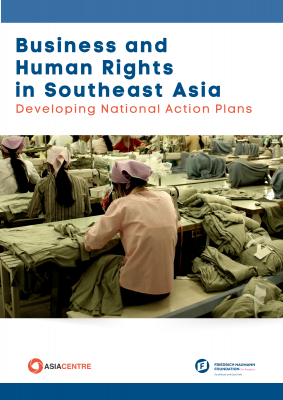
Abstract
This work examines the progress made in Southeast Asia towards developing National Action Plans (NAPs) on Business and Human Rights (BHR). A decade after the adoption of the United Nations Guiding Principles (UNGPs) on Business and Human Rights, has there been an uptake in NAPs in the region? What are the various NAPs development processes and platforms across the region? Have all stakeholders been consulted? What are the obstacles to deepening the NAPs processes and the BHR agenda in the region? This work finds that: 1) An initial grudging uptake by States has engendered a cascade in slow-moving NAP-developing processes; 2) Following Thailand’s lead in adopting a NAP in 2019, others are poised to do the same, notably in Indonesia and Malaysia, though efforts have been delayed by the COVID-19 pandemic and political uncertainty; 3) While national commissions on human rights and civil society organisations had initially taken the lead in pushing for NAPs on BHR, buttressed by the earlier adoption of NAPs in other parts of the world, Southeast Asian States began to consider NAPs processes within the past few years; 4) Key stakeholders have been largely absent from the NAPs development processes across the region: parliamentarians and business organisations – the former due significantly to the lack of awareness of the BHR agenda and non-participation in Executive-led processes and the latter due to lack of interest in and understanding of the BHR agenda; and 5) A key challenge to NAPs development processes is their alignment to international human rights standards. This work was produced in partnership with the Friedrich Naumann Foundation for Freedom, who like the Asia Centre, seeks to build awareness of BHR in the region. This work is part of Asia Centre’s exploration of the regional human rights architecture.
Table of contents
- Chapter 1: Introduction – Business and Human Rights in Southeast Asia
- Chapter 2: Challenges of NAP Development in Southeast Asia
- Chapter 3: National Action Plans On Business And Human Rights In Southeast Asia: What Role For Parliamentarians?
- Chapter 4: The Role of Business Organisations in Developing National Action Plans On Business And Human Rights in ASEAN
- Chapter 5: Conclusion – The State Of NAPs in Southeast Asia: Recommendations and the Way Forward



